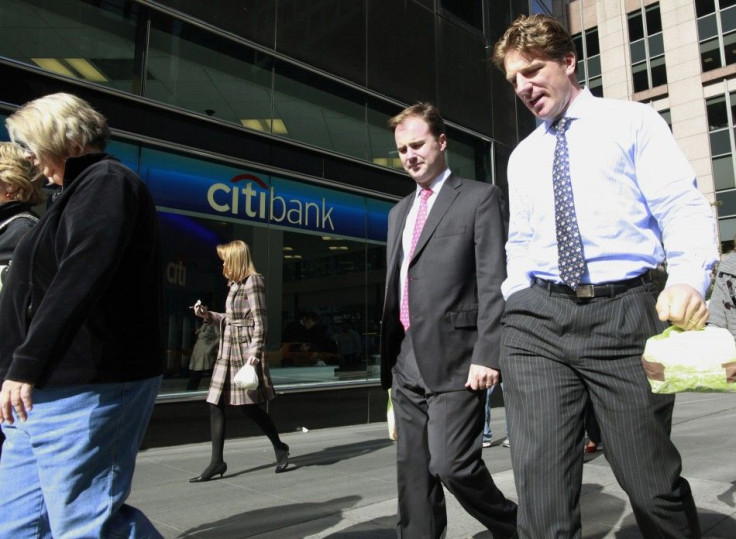US Added 120,000 Jobs In March, Fewest In 5 Months

U.S. employers hired 120,000 workers in March, well below economists' forecast and the smallest gain since October, signaling the economic recovery could be losing steam.
The nation's unemployment rate, however, ticked down to a three-year low of 8.2 percent on declining labor-force participation, underscoring the concern from Federal Reserve policy makers that recent solid gains in hiring could fizzle if U.S. economic growth remains out of sync, as Fed Chairman Ben Bernanke said last week.
Economists surveyed by Reuters had expected a much larger increase last month of 203,000 jobs and for the jobless rate to hold at 8.3 percent.
Last month was the first time since November that job growth fell below 200,000, including an upward revised gain of 240,000 in February, the Labor Department said Friday.
We are still really cautious in our employment outlook, Kim Fraser, an economist with BBVA Compass, the trade name of Compass Bank, said before the report.
Both economists and Federal Reserve officials have said job growth may moderate in 2012 amid higher gas prices and the ongoing financial crisis in Europe. Improved job growth in recent months had raised questions about whether the Fed will take further steps to spur the economic recovery, possibly through another round of bond buying. It isn't clear if March's jobs report will tip the Fed's hand in that direction.
The nation's unemployment rate has fallen from 9.1 in August and that gradual decline was seen as important to President Barack Obama's re-election chances.
In March, the labor participation rate fell slightly to 63.8 percent from 63.9 percent in the prior month.
Job gains lead to income growth that supports consumer spending, which accounts for 70 percent of the U.S. economy.
When Obama entered office in January 2009, the unemployment rate was 7.8 percent. The jobless rate peaked at 10 percent nine months later. Since August, it has tumbled from 9.1 percent to 8.2 percent.
The U.S. still has about 13 million people who are unemployed, against 142 million employed people, and 88 million who are out of the labor force, data from the Bureau of Labor Statistics showed.
Private Payrolls
Private employment expanded by 121,000 after a gain of 233,000 in February. Economists had called for an increase of 218,000. Factories added 37,000 jobs in March, after increasing by 31,000 in February. That's more than economists' estimate of 20,000 job gains.
Manufacturing has remained resilient throughout this recovery, said Ellen Zentner, an economist at Nomura Securities in New York.
The average workweek for all employees on private nonfarm payrolls decreased to 34.5 hours in March from 34.6, while the average hourly earnings fell to $806.96 in March from $807.56.
Weather Payback
March also was a record-setting month in terms of favorable weather, Zentner said.
The March employment report seems to reflect a weather payback, after an extremely warm winter helped boost job gains.
People might have been more inclined to look for work earlier in the year, rather than putting it off until later because of the unseasonably milder weather.
Seasonal factors will subtract about 1.5 million jobs over April and May, said Ted Wieseman, a Morgan Stanley economist, in a note to investors.
FOMC
The Fed remains concerned the nascent economic recovery could falter, as it did last year. Federal Reserve Chairman Ben Bernanke is keeping the option of further monetary easing open if unemployment remains high.
In its March 13 Federal Open Market Committee meeting, a number of policymakers said while recent employment data had been encouraging there was a non-negligible risk that improvements in employment could diminish as the year progressed.
The minutes of that meeting, which were released Tuesday, echoed a speech by Bernanke delivered last week to a gathering of economists.
Bernanke said the rapid declines in the unemployment rate seem to be out of sync with the overall pace of economic expansion and is something of a puzzle.
U.S. gross domestic product grew 3 percent in the last three months of 2011, but it is expected to have slowed to just below 2 percent in the first quarter of 2012. For all of last year, it expanded only 1.7 percent.
It normally takes roughly 4 percent annual growth to lower the rate by 1 percentage point over a year.
Bernanke cautioned that he doesn't expect the unemployment rate to keep falling at its current pace without much stronger growth and more robust hiring.
The minutes didn't show much enthusiasm among Fed officials for launching another round of quantitative easing, or QE3, any time soon.
The soft employment numbers certainly leave the door open for further accommodation and may shift the decision point to the June FOMC as the Fed continues to monitor the incoming data, said Michael Gapen, an economist at Barclays Capital.
© Copyright IBTimes 2025. All rights reserved.





















